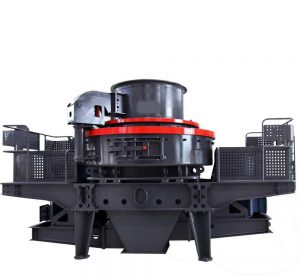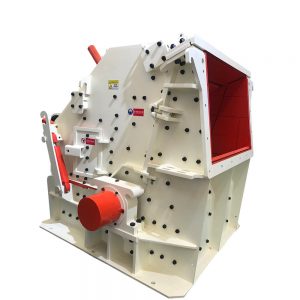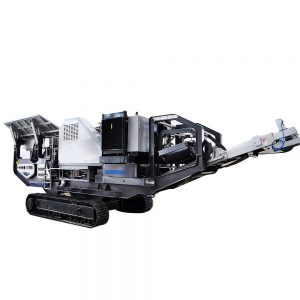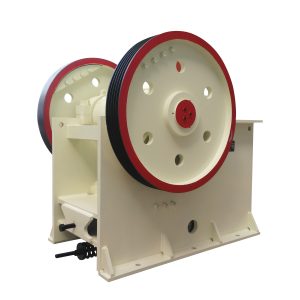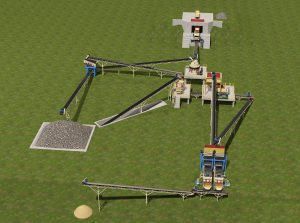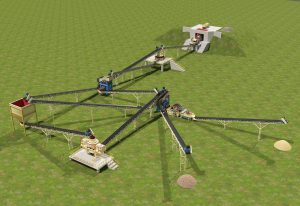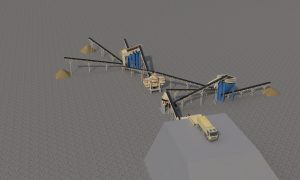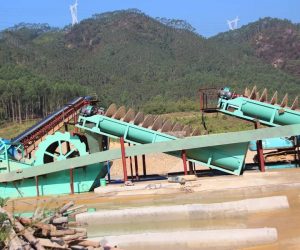Construction Waste Crushing & Recycling
Construction Waste
Construction waste is solid waste generated during the construction, reconstruction, expansion, or demolition of buildings. The different sources of construction waste can be divided into building construction waste and demolition waste. Construction waste, as its name implies, is the solid waste produced in new construction, reconstruction, or expansion projects, and demolition construction waste is the construction waste produced during the demolition and demolition of buildings.
- Building Construction Waste
At the construction site, the contents of various components of construction waste generated by different types of buildings are different, but the main components are the same, mainly including scattered mortar and concrete, masonry and concrete fragments produced by chiseling, piling The cut reinforced concrete pile heads, scrap metal materials, bamboo and wood, and various packaging materials account for about 80% of the total construction waste, and other waste components account for about 20%. Table 1.1 lists construction sites with different structures. The proportion of construction waste in China and the amount of waste generated per unit building area. - Construction Demolition Waste
The amount of waste generated by the demolition of old buildings is larger than that of the construction unit area. The composition of demolition waste in old buildings is related to the structure of the building: in old brick-concrete structures, bricks and rubble account for about 80%, and the rest are wood and broken pieces. Glass, lime, muck, etc., the old buildings demolished at this stage are mostly brick-concrete residential buildings; for buildings with abandoned frame and shear wall structures, concrete blocks account for about 50% to 60%, and the rest are metal, brick, masonry Blocks, plastic products, etc., old industrial plants, buildings are the representatives of such buildings. With the passage of time, the building level is getting higher and higher, and the composition of the old building demolition waste will change, and the main component will change from bricks and rubble to concrete blocks.
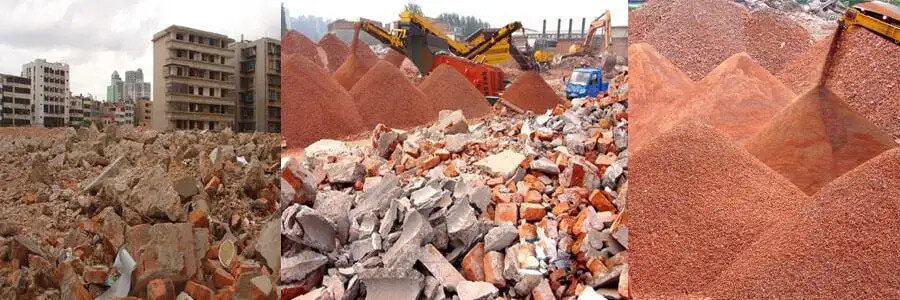
Classification of Construction Waste
According to the source classification, construction waste can be divided into five categories: land excavation, road excavation, old building demolition, construction, and building materials production waste, asphalt blocks, waste plastics, waste metals, waste bamboo, and other components.
- Land excavation waste is divided into the topsoil and deep soil. The former can be used for planting, while the latter is mainly used for backfilling, landscaping, etc.
- Road excavation waste is divided into concrete road excavation and asphalt road excavation. Including waste concrete blocks, and asphalt concrete blocks.
- The demolition waste of old buildings is mainly divided into bricks and stones, concrete, wood, plastic, gypsum and mortar, roofing waste, steel, and non-ferrous metals, etc., and the amount is huge.
- Construction waste is divided into residual concrete, construction debris, and waste from house decoration. Remaining concrete refers to the excess concrete that is not used in the project, and also includes the concrete that is suspended for some reason (such as weather changes) and not used in time. Construction scraps include old concrete, mortar, and other mineral materials from chiseling, plastering, etc., as well as types of wood, paper, metal, and other waste. The waste generated by house decoration and decoration mainly includes waste steel bar, waste iron wire, and various scrap steel accessories, metal pipeline waste, waste bamboo wood, wood chips, shavings, packing boxes and bags of various decorative materials, scattered mortar and concrete, broken pieces. Bricks and broken concrete blocks, yellow sand, stones, and boulders were scattered during handling. Among them, the main components are broken bricks, concrete, mortar, pile heads, packaging materials, etc., accounting for about 80% of the total construction waste.
Recycling of Construction Waste
The recycled aggregates of construction waste are processed into permeable bricks, recycled mortar, PC prefabricated components, road water stabilization layer, dry powder mortar, RDF clean-burning rods, and other environmentally friendly building materials after crushing, screening, iron removal, light material separation, and other processes. so as to turn construction waste into treasure, and achieve a win-win goal of ecological benefits, social benefits, and economic benefits.
- Recycled aggregate
Recycled aggregate is the main product for the recycling of construction waste. It has good water permeability, does not freeze or shrink when exposed to water, has a large specific surface area, and has no plasticity. It is widely used in road cushions, sub-base, base, and water stabilizers. Layers and other road engineering fields. - Recycled permeable brick
Recycled permeable bricks can quickly infiltrate rainwater into the surface and restore it to groundwater, so that groundwater resources can be replenished in time, and are widely used in sponge city construction. - Recycled concrete
The recycled aggregate of construction waste replaces natural aggregates such as sand and gravel, and then adds cement, water, etc. to form recycled concrete. - Recycled ready-mixed mortar
Recycled ready-mixed mortar is a new type of environmentally friendly green building material, with superior performance, convenient construction, and ready-to-use, which can avoid air pollution caused by on-site mixing. - Recycled small prefabricated components
The construction waste recycled graded aggregate is used as the raw material, and various small prefabricated components such as urban roadside stones (curb stones), ditch cover, subgrade cover, tunnel side ditch, and cover.
Construction Waste Recycling Equipment
The fixed construction waste crushing production line needs a certain site to build the workshop, which is convenient for comprehensive management, has a complete production and living facility system, and has comprehensive treatment conditions for environmental protection. It can effectively control the production cost of construction waste recycled aggregate, but it is more suitable for Long-term operation, especially the construction waste brick-making project, and the economic benefits are significant. The complete set of stationary construction waste crushing equipment is composed of vibrating screen feeder, special crusher for construction waste, electromagnetic iron remover, light material processor, circular vibrating screen, belt conveyor and dust removal equipment. Among them, the special crusher for construction waste is a special equipment for crushing construction waste with a steel bar shearing device.
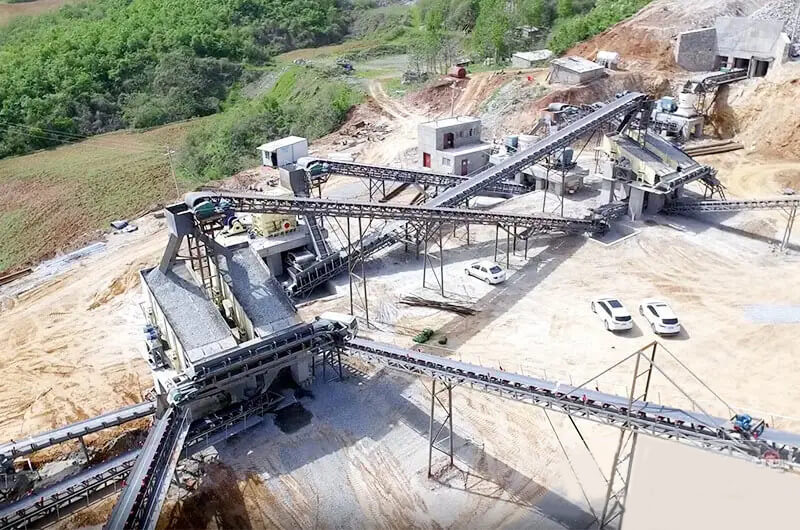
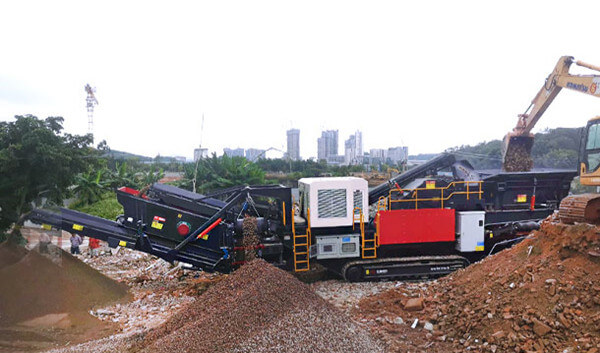
The mobile crushing station focuses on the crushing of urban construction waste. In addition to being used at the building demolition site, it can excellently complete the crushing work of the building demolition. It can also be used for on-site construction of access roads, foundation backfilling, and on-site removal of concrete. of steel. The mobile construction waste crushing station is developed by our company and adopts advanced construction waste treatment technology. After processing, various types of new building materials that meet the quality inspection specifications can be produced.
The large-scale construction waste crusher can meet the needs of construction waste crushing. The equipment is mainly aimed at bulk materials and has high output, simple operation, and convenient maintenance. At present, the most suitable pulverizer for construction waste treatment on the market is a kind of equipment called integrated crushing and screening – a fixed crushing and screening station, a tire-type mobile crushing and screening station, etc. The construction waste mobile crushing station we produce adopts advanced construction waste treatment technology. Various types of new building materials that meet the quality inspection specifications can be produced, and the effective utilization rate of different construction wastes according to the equipment configuration can reach 80-100%. Compared with similar products, Eastman Crushing’s mobile crushing station has: dual-purpose oil and electricity, flexible switching, lower cost; no dust system, suppresses dust pollution from the source; steel bar cutting device, avoids crusher blockage; intelligent system, high output, energy Significant advantages such as low consumption. The crushing station can be widely used in various stages of coarse crushing, medium, and fine crushing, ultra-fine crushing, sand making, shaping, and screening in the fields of metal mines, construction stones, and solid waste treatment. The workstation has the characteristics of optimized structure, lightness and reasonableness, and versatility, which overcomes the disadvantages of large space occupied by separate equipment components and complicated scattered operations.
